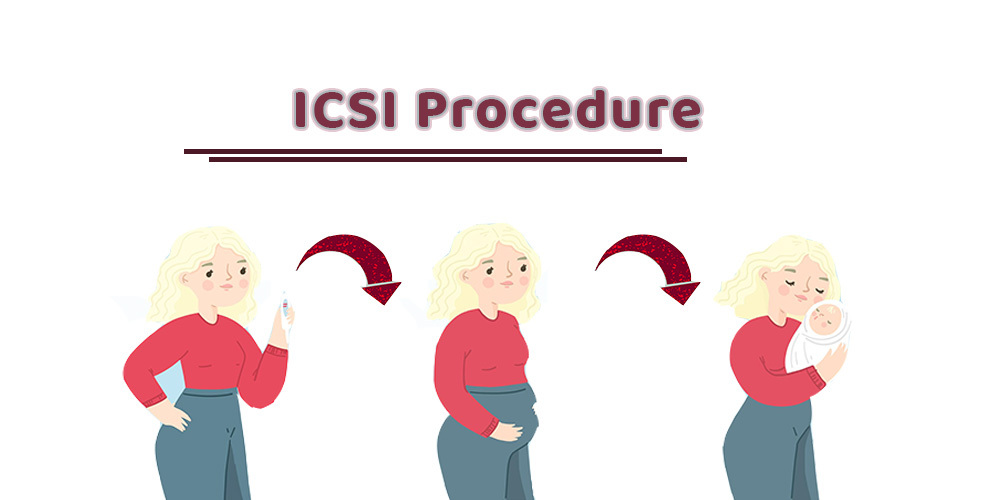How to do ICSI procedure? (step by step timeline)
Procedure of ICSI step by step for one ICSI cycle procedure is in following passage, so stay tuned to figure out each step of ICSI!
Step one: Day 1
Day 1 of a woman’s period marks the beginning of her ICSI cycle, as most ICSI cycle procedures often starts during this time. Some doctors suggest the ICSI cycle begins on day 2 or 3 of a woman's menstrual cycle rather than day 1. It may take a day or two to assess hormone levels and establish a treatment plan. However, the exact timing of the ICSI cycle will depend on the individual's specific circumstances and the recommendations of your fertility specialist.
Step two: Injections and medications
The second step begins on day 2 or day 3 of the start of menstruation. A baseline ultrasound, blood test and often testing for FSH (Follicle Stimulating Hormone) are the necessary evaluations. From Day 1, the stimulation phase of the IVF cycle has already started, but bear in mind that the ovaries typically only generate one egg in a natural cycle. To stimulate the follicles in the ovaries, in which the eggs develop, to produce more eggs during an IVF cycle, you will have to take certain medications for a duration of 8 to 14 days. Injectable Medication for IVF. Injections are among the most commonly used medication for IVF, and depending on the cycle, you may have to administer one or two injections daily. Follicle Stimulating Hormone (FSH) and Luteinizing Hormone (LH) are the hormones commonly seen in these injections. Is it possible to self-administer IVF injections? Initially, the concept of self-injection might seem scary. Still, your fertility specialist and medical team will guide you step-by-step and demonstrate where and how to administer the injections. You can even involve your partner or any other support person to observe and learn during the appointments. Keeping an Eye on Your Ovaries at IVF Center. The fertility doctor and nursing staff will vigilantly monitor the growth of the follicles in your ovaries during your cycle with the help of blood tests and ultrasounds. Your medications may be altered if necessary. A transvaginal ultrasound may be conducted with a probe to observe the ovaries and growing follicles to accurately adjust the treatment throughout the stimulation phase. As the stimulation phase ends, doctors will frequently check on you to ensure the trigger injection is timely. Trigger Shot. Are you anxious about being able to conceive despite weak ovulation or no ovulation at all? Don't worry! There is a trigger shot that offers a high success rate. Compared to hCG (human chronic gonadotropin), which functions similarly to luteinizing hormone (LH), now trigger shots are mostly Lupron. Trigger shots must be administered once for each IVF cycle before ovulation. These shots are injected either intramuscularly or subcutaneously. The self-administration method is generally employed, and most women opt to administer the shot under the skin on the abdomen. The trigger injection time is specified by your fertility specialist, as the timing is extremely critical since egg retrieval has to be done by the specialist before you ovulate.
Step three: Egg Retrieval on Day 12, 36 Hours after Trigger Shot
Egg retrieval is also known as egg collecting or egg harvesting. In this day the fertility specialist extracts the eggs from the intended mother's ovaries. The specialist will utilize the most recent ultrasound equipment to insert a needle into each ovary. Precision is critical here, as removing the eggs from the fluid-filled follicles is sensitive. So the specialist has to be highly professional in her work. Generally, between 8 to 15 eggs are collected, though the patient's age and medical history also play an essential role. Suppose your AMH (anti-Mullerian hormone) test shows that you need ICSI with the egg donation procedure. In that case, the egg retrieval step will be performed on the donor instead of the intended mother. Our fertility specialists prioritize your time and suggest methods with the highest success rates for a positive and guaranteed experience.
Step four: On Day 12, Sperm Collection.
The husband should provide a sample of sperm on the day of egg retrieval. After semen collection, the sperm will be further examined in the laboratory to determine the viability and health of the sperm. This evaluation will be conducted through an examination of sperm morphology, count and motility. To accurately grade the sperm, experts will use their years of expertise to select the best quality sperm. Practically speaking, at least 10x10(6) spermatozoa/ml must be present, 30% of which should exhibit motility, 15% progressive motility, and 20% normal morphology.
Step five: Fertilization via microinjection technique | when is ICSI done in IVF?
Ultimately we get to the technical part, which a tiny needle will be utilized to inject a single sperm into the center of the egg to ensure fertilization. Microinjection technique is utilizing in fertilization step when ICSI is done in IVF! Classical IVF will require at least 50,000 swimming sperm. One sperm will be allowed to enter the egg's cytoplasm, thus initiating fertilization via IVF, or in other word the fertilization will occur naturally! A high-tech laboratory is required for performing microinjection in ICSI. The laboratory setup for ICSI involves specialized equipment such as a micromanipulator, a high-power microscope, and microinjection needles. Additionally, highly trained personnel are required to perform the procedure, as it requires a high level of skill and precision. So ICSI generally has higher success rates than IVF in cases where male infertility factor is present, but the overall success rates for both procedures depend on various factors. Ultimately, after fertilization, 17 hours is optimal for an embryo to form and begin the development process. To ensure that the best embryo is formed, scientists will use specialized incubators to control the growth and development conditions also timelapse. By the fifth or sixth day, the embryo should comprise roughly 100 cells (the blastocyst stage). To successfully transfer the embryo, all embryos must be developed to the blastocyst stage. The prepared embryo will be transferred to the uterus of the intended mother.



Comments & Questions